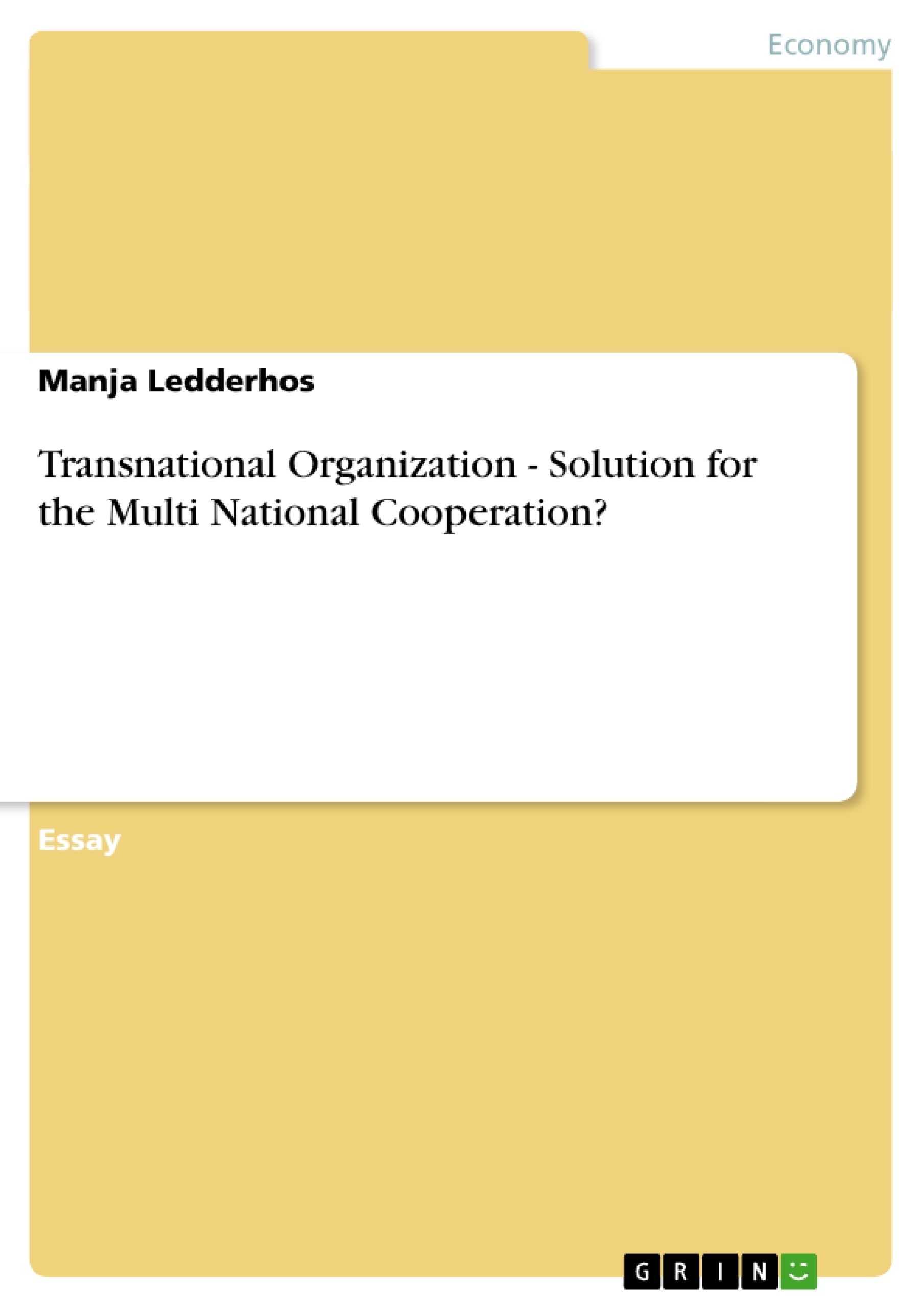1.1. Problem Background
International companies are confronted with major organizational problems as they often
have to manage a complex system of subsidiaries and at the same time need to respond to
the demands of economic and political forces.
The organizational structure of companies get more and more complex. In times of
falling national growth rates and globalisation1, many companies expand into new
markets. This global expansion trend can be seen by the intensive growth of foreign
direct investment outflows in the last ten years.2 Philips, for example, has build up a
huge network of subsidiaries in 60 countries.3 As companies expand, the flow of goods,
resources and information among organizational units rapidly increases4, and it becomes
more and more complicated to manage, control and learn from subsidiaries.
Demands on companies have also changed as “economic and political imperatives are
rising simultaneously in opposite directions“5. Economic forces lead towards
globalisation demanding minimized unit costs while political forces ask for national
responsiveness as a result of protectionism for local economies.6 Today, companies are
confronted with the demands of efficiency and responsiveness at the same time.7
1.2. Aim of the paper
In the following paper, I will analyse Bartlett and Ghoshals’ transnational solution as a
means to cope with the complex organization and conflicting demands on Multinational
Cooperation (MNC), and focus my discussion on advantages and problems from a
control perspective.
1 Donaldson (2002), p.13.
2 Hill (2001), p. 183.
3 Goshal/Bartlett (1990), p. 77 [Art. 22].
4 Bartlett/Ghoshal (1987). p.47 [Article 12].
5 Martinez/Jarillo (1989), p. 500 [Article 23].
6 Hill (2001), p. 386. and Bartlett/Ghoshal (1987). p.9 [Article 11].
7 Bartlett/Ghoshal (1987). p.10 [Article 11].
Inhaltsverzeichnis (Table of Contents)
- Introduction
- Problem Background
- Aim of the paper
- Analysis of the Transnational Solution
- Lead in
- Worldwide Administrative heritage
- From unidimension to multidimension
- Discussion of the Transnational Solution
- Theoretic advantages of the Transnational Solution
- Coordination of the transnational firm in practise
- Conclusion
- Sum up
- Own evaluation of the transnational solution
Zielsetzung und Themenschwerpunkte (Objectives and Key Themes)
This paper aims to analyze the transnational solution proposed by Bartlett and Ghoshal as a means to manage the complex organization and conflicting demands on Multinational Cooperation (MNCs). The focus of the discussion is on the advantages and problems of this solution from a control perspective.
- The evolution of organizational structures in multinational corporations.
- The challenges of managing subsidiaries and responding to economic and political forces in a globalized environment.
- The need for balancing efficiency and responsiveness in multinational corporations.
- The concept of the transnational solution as a response to these challenges.
- The advantages and disadvantages of the transnational solution from a control perspective.
Zusammenfassung der Kapitel (Chapter Summaries)
- Introduction: Introduces the problem of managing complex organizational structures in multinational companies. Discusses the need to respond to economic and political forces and the increasing complexity of organizational structures in a globalized world.
- Analysis of the Transnational Solution: Explores Bartlett and Ghoshal's concept of the transnational solution as a means to address the challenges faced by multinational corporations. Examines the historical context of administrative heritage in major trading blocks (Japan, America, Europe) and their impact on coordination mechanisms.
- Discussion of the Transnational Solution: Presents the theoretical advantages of the transnational solution in terms of balancing conflicting demands of efficiency and responsiveness. Examines the practical challenges of coordinating a transnational firm.
Schlüsselwörter (Keywords)
The main keywords and focus topics of the text include transnational organization, multinational cooperation, control perspective, coordination mechanisms, globalisation, efficiency, responsiveness, administrative heritage, strategic reorientation, and interunit learning.
- Quote paper
- Manja Ledderhos (Author), 2002, Transnational Organization - Solution for the Multi National Cooperation?, Munich, GRIN Verlag, https://www.grin.com/document/11505




